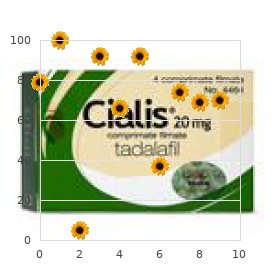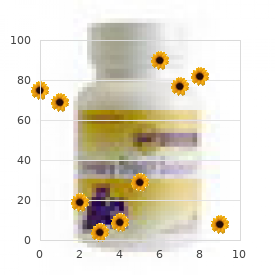"Cheap bimatoprost 3 ml line, treatment models".
By: N. Tyler, M.B. B.CH., M.B.B.Ch., Ph.D.
Associate Professor, UCSF School of Medicine
This might result in large tidal volumes in patients with compliant lungs and small tidal volumes in patients with non-compliant lungs medications via ng tube cheap bimatoprost 3 ml. Dual Control (or Adaptive Control) was designed to combine the features of volume control and pressure control medications 563 buy bimatoprost us. Vendors use different names to describe this mode of ventilation: "Pressure Regulated Volume Control," "AutoFlow," and "Volume Control Plus" are examples of vendor names for dual/adaptive control. In this mode, the tidal volume is set and the ventilator delivers variable pressure control breaths in order to achieve the desired tidal volume. In dual control mode, the flow pattern is initially high and then decelerates just as it is during pressure control mode. The ventilator analyzes the delivered tidal volume of the 141 previous breath and adjusts the necessary airway pressure higher or lower during the next breath. For example, if the set tidal volume is 500 mL and the current breath has an airway pressure of 15 cm H2O resulting in an actual tidal volume of 420 mL, the ventilator will automatically increase the airway pressure on the next breath in an attempt to achieve 500 mL. With each inspiratory effort the patient triggers the ventilator, which maintains the preset pressure in the circuit throughout inspiration. The inspiratory cycle ends when the flow rate has decreased to a pre-determined level (usually 25% of the peak flow rate, but adjustable on many ventilators). Most modern ventilators have the potential for preset backup pressure control modes that alarm and take over in the event of prolonged apnea. The prolonged inflation time can help prevent alveolar collapse, resulting in improved oxygenation. Disadvantages include: lack of protection against massive aspiration, less airway pressure tolerated, and lack of access to the airways for suctioning. Other uses include post-extubation support, obesity-hypoventilation syndrome, and acute postoperative respiratory failure. Recruitment maneuvers refer to the application of elevated pressures and volumes for variable duration, magnitude and frequency in an effort to recruit atelectatic lung. Prolonged periods of high oxygen tension can also lead to atalectasis and increase V/Q mismatch. Normal lung units are at highest risk for oxygen toxicity because these areas receive the most ventilation. The FiO2 should be reduced when possible provided that arterial oxygenation is adequate. Peak (Ppeak) is the pressure reached at end inspiration during positive pressure volume control ventilation. Plateau (Pplat) reflects the pressure required to overcome the elastic properties of the lung/chest. The Pplat is an estimate of the peak alveolar pressure, which is an indicator of alveolar distention. Oxygen toxicity: Prolonged exposure to high concentrations of oxygen may cause lung damage through the production effort and is obtained during a short inspiratory hold at end inspiration. Comparing static and dynamic compliance can help identify the cause(s) for difficulty with ventilation or difficulty with discontinuing the ventilator. Mean pressure is the average pressure within the airway during one complete respiratory cycle. Esophageal pressure changes reflect pleural pressure changes (the absolute Pes does not reflect absolute pleural pressure). Work of breathing: To achieve ventilation, work is performed to overcome the elastic and frictional resistances of the lung and chest wall. The actual arterial oxygen saturation, SaO2, correlates well with the SpO2 when the SaO2 is greater than 80%. Other causes of inaccurate SpO2 include dyshemoglobinemias, dyes, pigments, low perfusion, motion, abnormal pulse, extreme anemia and external light sources. It is important to remember that dissolved oxygen (represented by PaO2) makes up a small portion of the total arterial oxygen content. The oxygen content of arterial blood (CaO2) consists of two components: oxygen bound to hemoglobin (which determines the SaO2) and the oxygen dissolved in plasma (which determines the PaO2).


See also Arthralgia from animal sera treatment of criminals order bimatoprost in united states online, 66 from arbovirus infections medications prescribed for anxiety discount bimatoprost 3 ml overnight delivery, 232 from Arcanobacterium haemolyticum infections, 238 from Bacteroides infections, 249 from brucellosis, 256 from Burkholderia, 256 from foodborne diseases, 924t from Fusobacterium infections, 331 from gonococcal infections, 340 from Haemophilus influenzae infections, 345 from hepatitis B, 369 from Kawasaki disease, 455 from Kingella kingae infections, 460 from Lyme disease, 475, 477, 478t from lymphocytic choriomeningitis virus infections, 481 from meningococcal infections, 500 from Moraxella catarrhalis infections, 513 from mumps, 514 from Mycoplasma pneumoniae infections, 519 from Neisseria gonorrhoeae infections, 336 from parvovirus B19 infections, 539 from Pasteurella multocida infections, 542 from pneumococcal infections, 572 poststreptococcal reactive, 680 from Prevotella infections, 249 from rat-bite fever, 608 reactive. See Pyogenic (septic) arthritis from Shigella, 645 from Staphylococcus aureus infections, 653 from streptococcal group A infections, 668, 677 from streptococcal group B infections, 680 from streptococci non-group A or B infections, 686 from tuberculosis, 738 from Ureaplasma urealyticum infections, 773 from varicella, 774 from Yersinia enterocolitica infections, 795 Arthritis-dermatitis syndrome, from Neisseria gonorrhoeae infections, 336, 341t Arthropodborne diseases. See Pertussis (Bordetella pertussis) Borrelia afzelii infections, 207t Borrelia burgdorferi infections. See also Endocarditis; Myocarditis; Pericarditis from Lyme disease, 475, 478t from streptococcal group A infections, 680 Carriage. See Eastern equine encephalitis from enteroviruses, 315 from Epstein-Barr virus, 318 from herpes simplex virus, 399, 403t from human herpesvirus 6, 414 from human herpesvirus 7, 414 Japanese. See Western equine encephalitis Equipment, soiled handling of, 162t, 164 Ertapenem for clostridial myonecrosis, 285 dosage of, beyond newborn period, 810t Erysipelas, from streptococci group A, 668, 677 Erysipelothrix rhusiopathiae infections, 927t Erythema from dengue fever, 305 from Pasteurella multocida, 542 from rubella, 629 from tinea corporis, 715 Erythema infectiosum. See Dengue fever from diphtheria, 307 from Ehrlichia infections, 312 from endemic typhus, 770 enteric. See Typhoid fever from typhoid vaccine, 640 from typhus, 770, 771 vaccine administration and. See Febrile children from varicella, 774 from varicella vaccine, 784 from Vibrio infections, 791 from West Nile virus infections, 792 yellow, 233t from Yersinia enterocolitica, 795 from Yersinia pseudotuberculosis, 795 "Fever blisters," 399 Fibrosis, from granuloma inguinale, 344 Fidaxomicin, for Clostridium difficile, 287 Fifth disease. See Flucytosine (5-fluorocytosine) Fluoroimmunoassays, for parainfluenza virus, 535 Fluoroquinolones.

Individuals with low fitness levels often exhibit the most dramatic improvement because they have the greatest potential for gain medications and mothers milk 2014 purchase generic bimatoprost from india. Highly trained individuals do exhibit improvements in cardiorespiratory function symptoms zinc deficiency adults effective 3ml bimatoprost, although to a lesser degree. These individuals have a higher threshold for change, and therefore a greater stimulus (i. Moderate-intensity training for at least 3 months is sufficient to show significant improvements. The amount of blood ejected from the heart with each beat is increased and can reach up to 5 to 6 L/min. In conjunction with a greater number of capillaries from long-term training, O2 delivery to working muscles is improved. This training adaptation increases the ability for cells to produce energy for muscular work because the process of oxidative phosphorylation occurs in the mitochondria. Long-term respiratory changes at rest include larger lung volume and larger diffusion of capillaries. Long-term respiratory changes during exercise include larger diffusion capacity, lower amount of air ventilated at the same O2 consumption, increased maximal minute ventilation, increased ventilatory efficiency, and lowered O2 uptake at submaximal workloads. Long-term metabolic changes at rest include muscle hypertrophy, increased capillary density, increased number of mitochondria, and increased concentration of muscle myoglobin. Regular exercise training at appropriate intensity, duration, and frequency increases the number and size of myocardial cells, resulting in an increased size of the heart. In these individuals exercise-induced changes can be symptomatic and result in sudden death either at rest or during exercise as a function of reduced myocardial efficiency and increased myocardial demand. Individuals of all ages with sedentary lifestyles have reduced myocardial function (i. As the body increases in size, the heart changes in size proportionally to meet increasing O2 demands. Developmental changes of the cardiorespiratory system often parallel changes in the musculoskeletal system as the body develops and matures. Therefore some changes during early childhood and throughout adolescence are a function of increased body mass and body size. In turn, these changes affect aerobic metabolic processes that affect the efficiency of movement and functional performance. Throughout adulthood, changes in cardiorespiratory function are mediated by physical activity level, in addition to disease processes. However, endurance increases with age until approximately the second decade of life as a function of improved O2 extraction. In a mature adult, 25% to 30% of O2 is extracted from blood by muscles, organs, and other tissues at rest and increases twofold to threefold during exercise. Infants have a rapid respiratory rate at birth secondary to incomplete lung maturation. As the lungs mature and increase in volume, breathing capacity increases, changing the rate and depth of breathing. Vital capacity and maximal voluntary ventilation are greater in males compared with females. Therefore the greatest difference in respiratory capacities between males and females occurs during puberty and continues throughout adulthood. Reductions in tolerance are associated with increases in fat mass or decreases in fat-free mass. These reduc- tions result in a smaller O2-carrying capacity and decreases in peak work rate capacity by up to 20%. Respiratory rate slightly increases at rest in older adults from 12 to 15 breaths/min as a function of changes in vital capacity. Vital capacity in an average 20- to 30-year-old adult male is approximately 4800 ml. Although changes in cardiorespiratory function may be inevitable, exercise and more active lifestyles may minimize or even prevent age-associated declines. Alterations in aerobic exercise prescription may be necessary to accommodate for baseline aerobic fitness or disease states; however, all older adults should be encouraged to participate in some form of physical activity. Older adults achieve cardiorespiratory benefit as a result of aerobic endurance training similar to younger cohorts.
Cheap 3ml bimatoprost visa. Atlas Genius "Symptoms".



